SEAFRONT, OFF-SEASON CATALOG
What question does the city that shows itself on the sea answer? Which imaginary space do their palaces overlook? I am not referring to the port, to the busy scenes of landings and embarkations, to the spectacle of fleets and fishing boats that set sail or return, nor to the docks where containers accumulate, nor to the smell of tar and old ropes. These cities belong to the global network of maritime trade, where the sea is a space to be cultivated, a highway to travel, between one destination and another.
I mean the city that offers itself as a view of the coastal landscape; built not to show the spectacle of the pier, but that of the shoreline, the breaking of the waves on the shore, the succession of sands, waves and clouds. The rotation of fixed and mobile, the movement of that which stretches and that which rises: the stable and the fluid. Where the houses are made to look east, to observe the rising of the moon and then to the west, to admire the sunset, beyond the horizon of the open sea, where the landscape recedes and disappears.
The seafront of this city is a succession of lookout points. An unlimited multiplication of views of the other part of the coastal landscape. Where the object of the gaze is no longer the spectacle of the street, but the privileged space for self-discovery. On the shore, the clash between water, air and earth is the extraordinary metaphor of the fusion of man with the elementary forces, in which all the senses participate. The frontier where individual destiny is measured with the rhythm of the universe.
The interest of the romantic culture for the coasts first, and subsequently the rapid substitution of the sun skin cult for that of the moon skin, have consolidated the prestige of the seafront. The combination of the coast as a landscape to be experienced, as an experiential terrace, and the defeat of pallor on the shoreline, where tan no longer represents the fatigue of work but the privilege of a healthy holiday, have produced the affirmation in Italy during the twentieth century of seaside towns that have redefined, in the Northeast, the amphibious profile of the coast between the mouth of the Isonzo and that of the Marecchia: the success of Lignano, Jesolo e Rimini.
Precisely for this reason, in the winter, in the city empty of vacationers, the magazine of hotels and condominiums that offer themselves to the sea acquires a fantastic flavor. Off-season, the catalog of Hotels and Residences shows the fatal reflection of the sea of darkness, the night of black water, where metaphysical anguish envelops the viewer on the edge of the inner abyss. Precisely the absence of shore, the rigidity of the poses, the mute and silent repetition of the thousand terraces, makes it possible to evoke in the serial duplication of the facades, the attraction of high tide, the vortex of aspiration and swallowing. The slow annihilation of being amidst dangers and enchantments.
The frontier where the backwash of the sea agrees with the heartbeat is not the deep sea, insensitive to change, but the SEA FRONT, where the alternation of ebb and flow corresponds to the passage between wakefulness and sleep, where the soul reveals itself by mirroring itself in dreams.

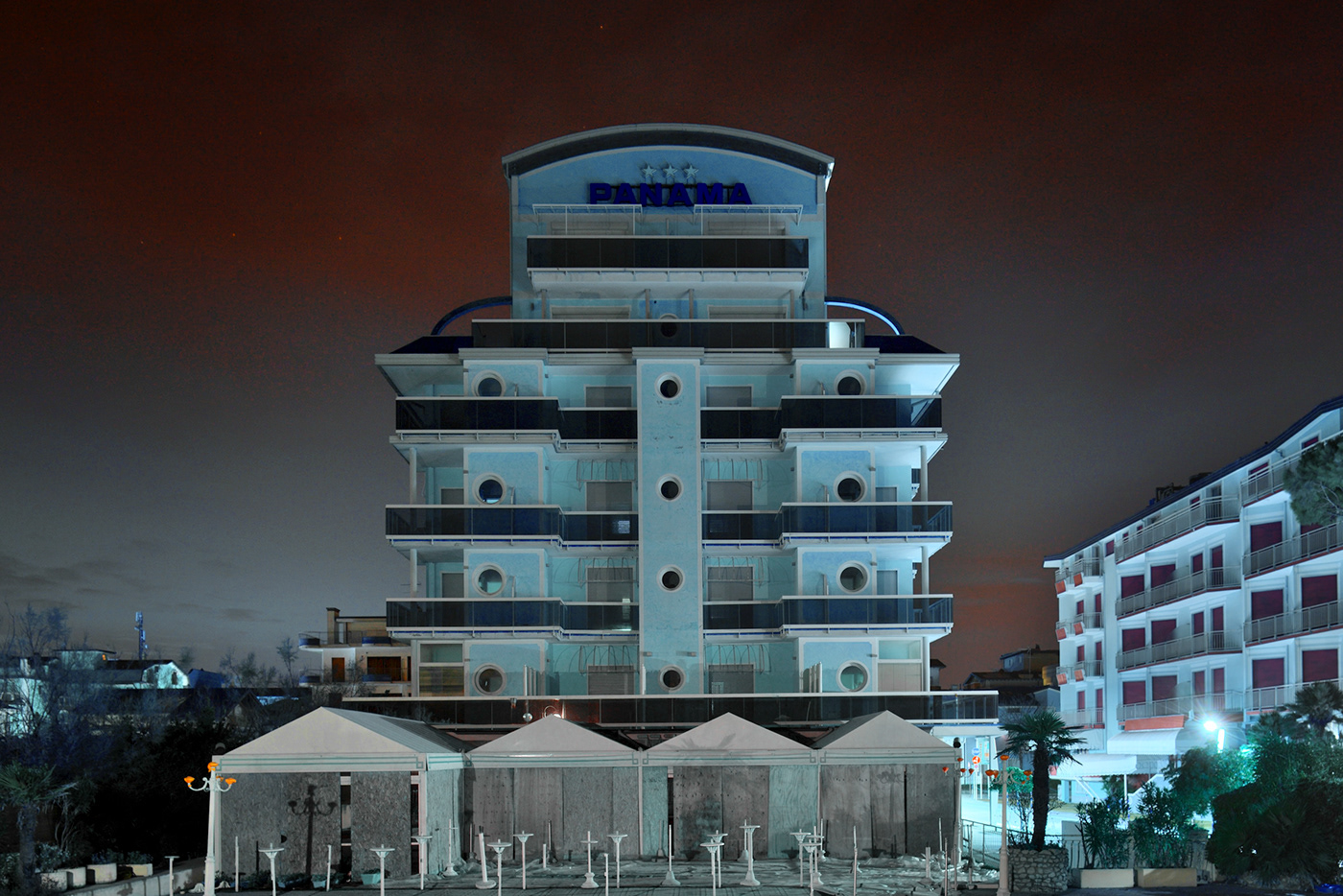
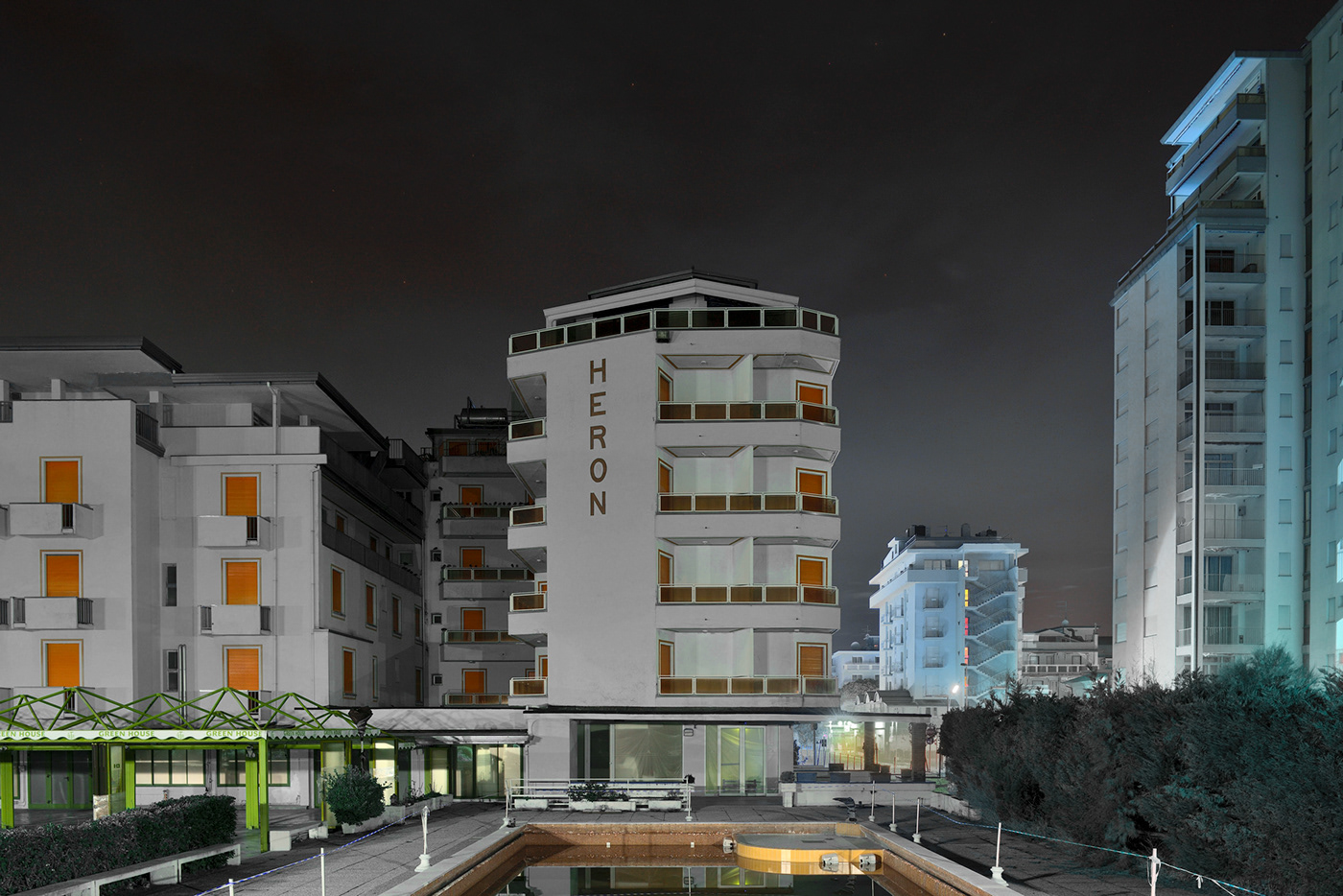
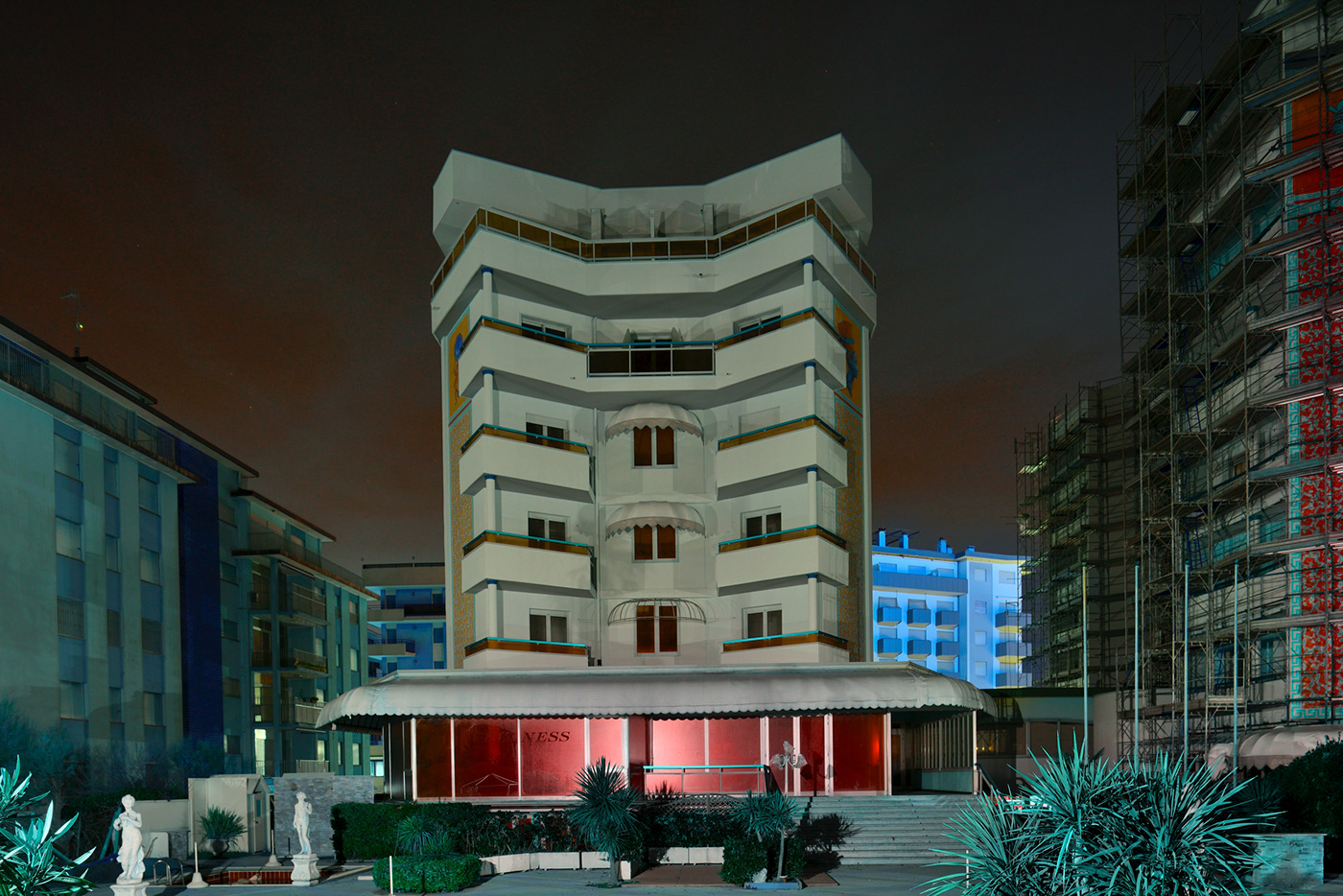

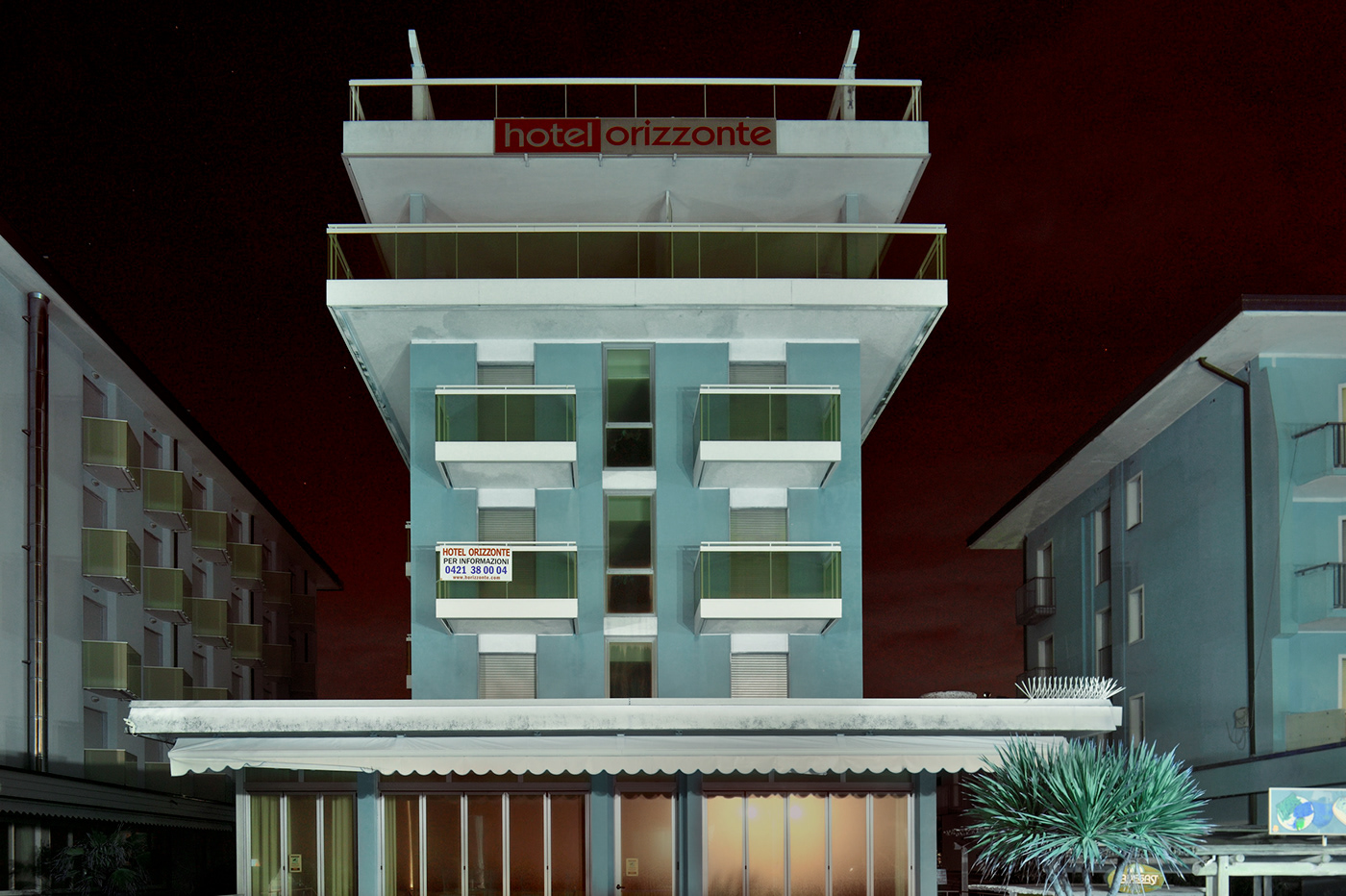
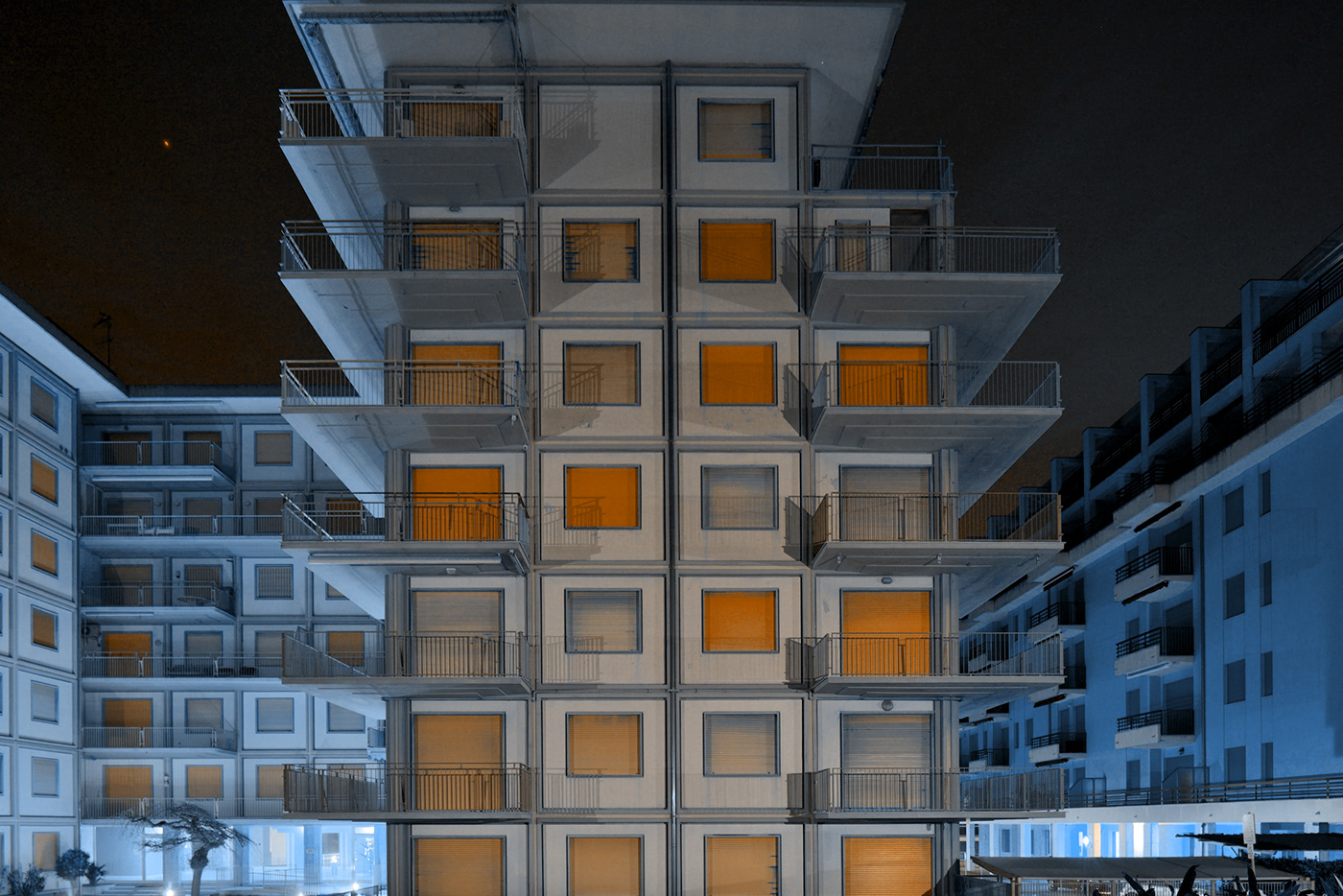
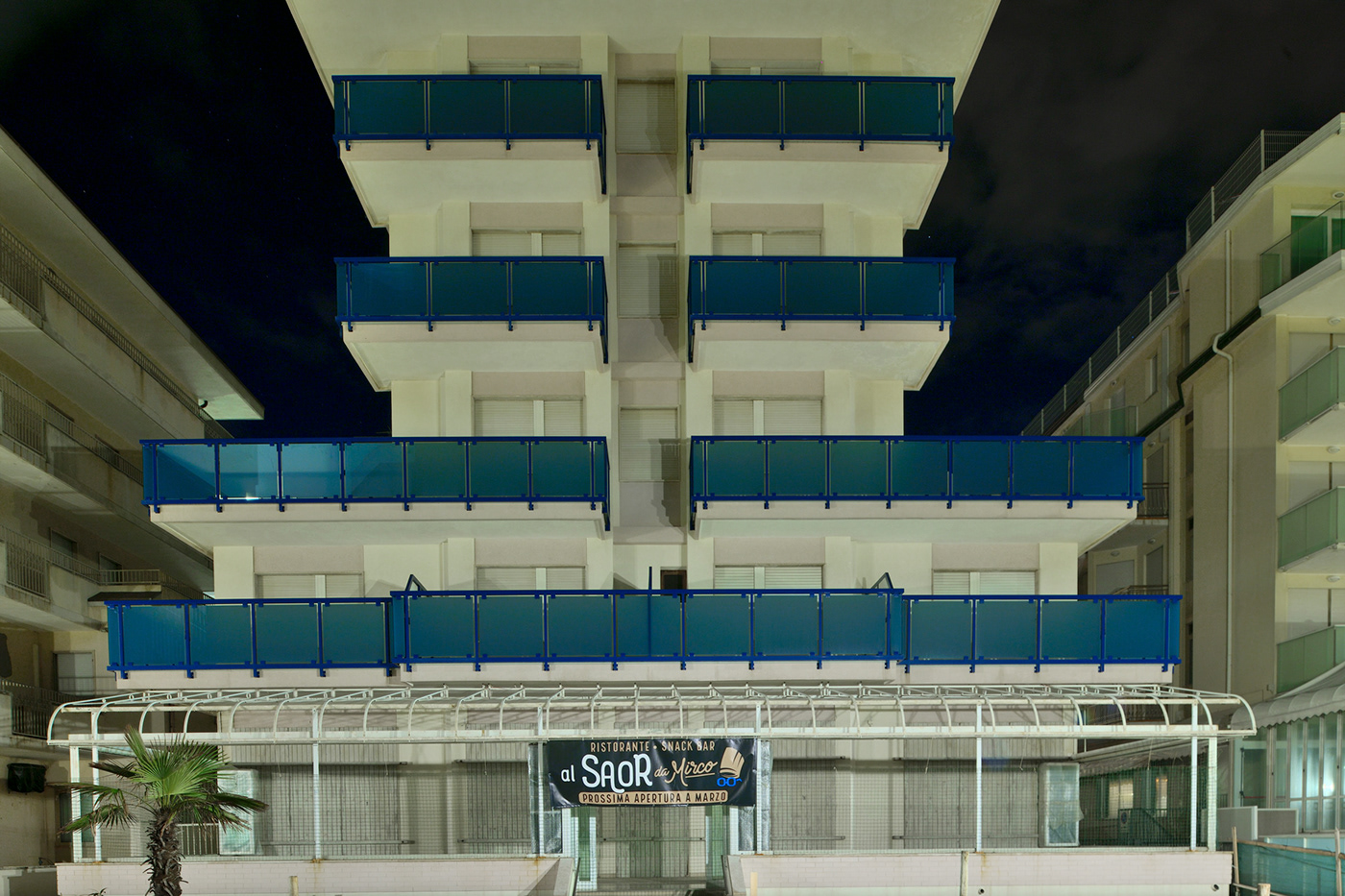
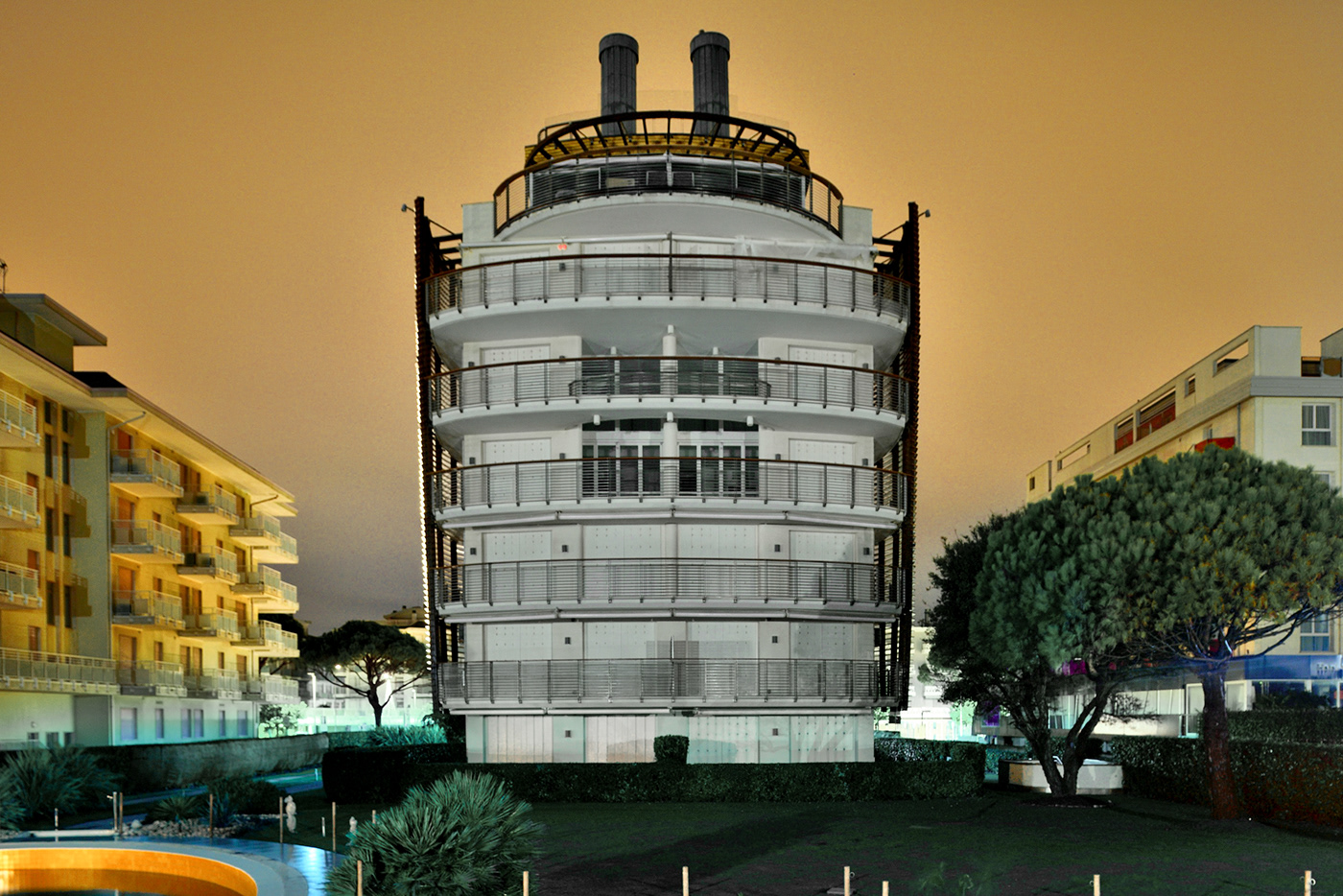
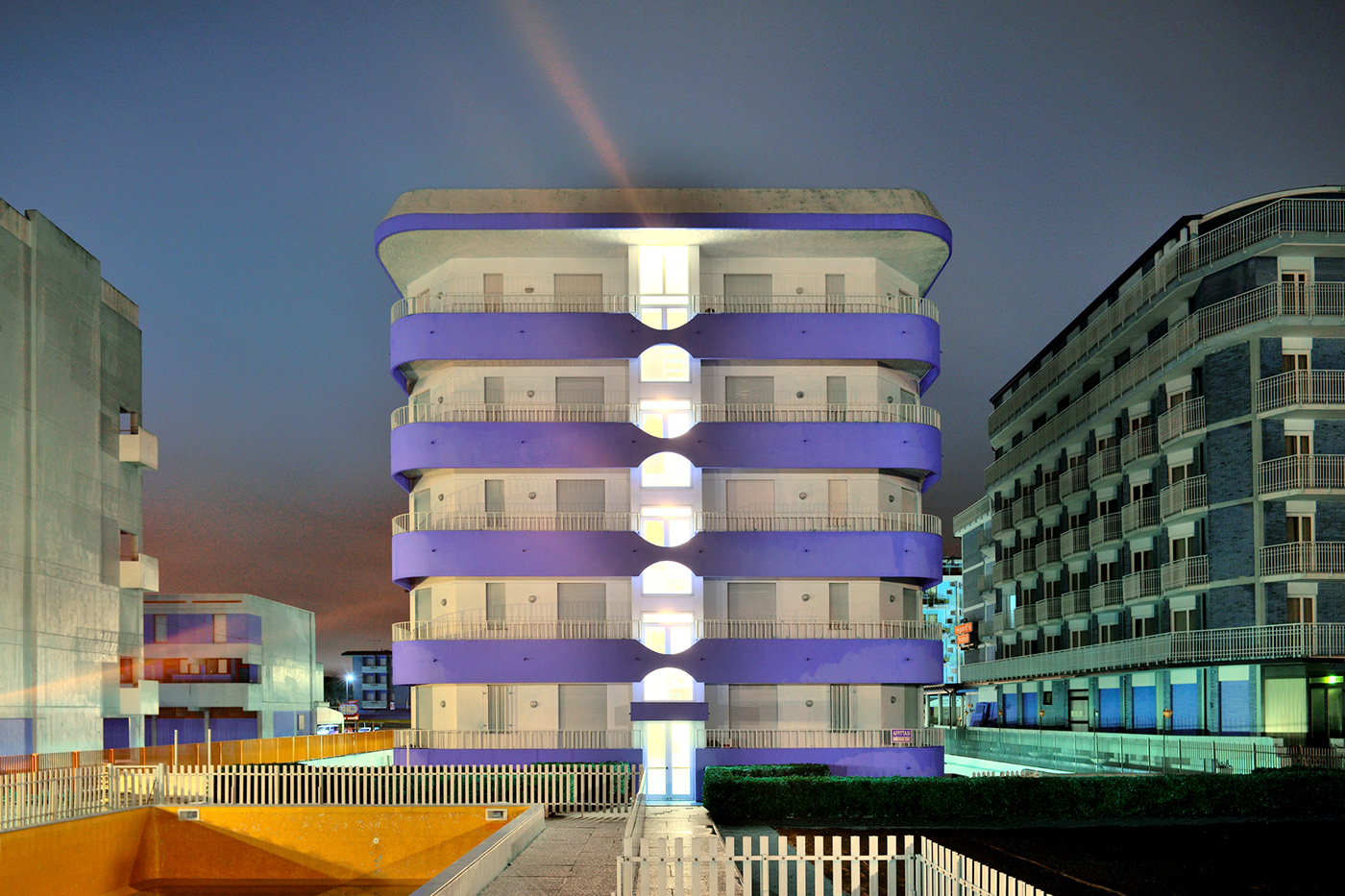
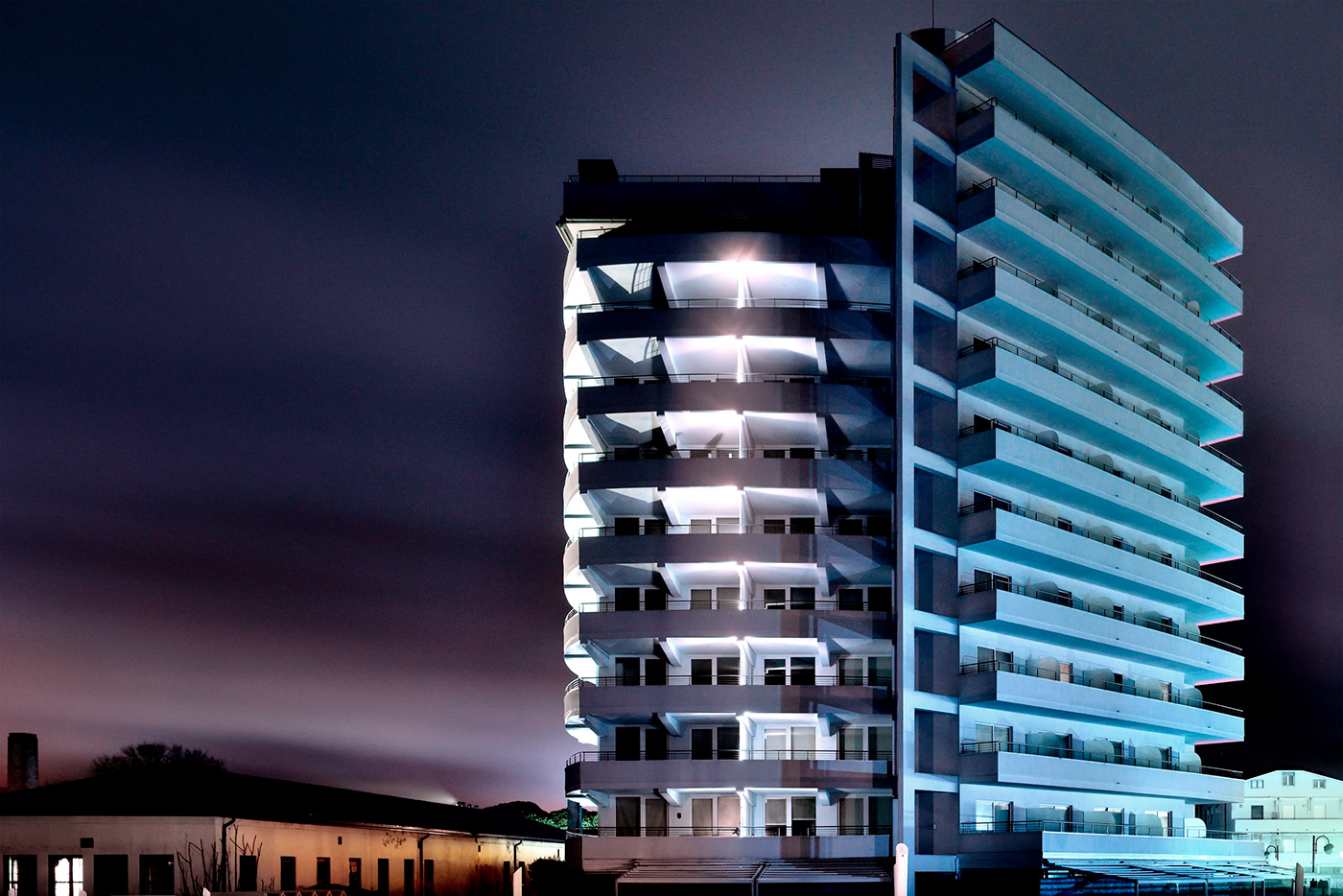
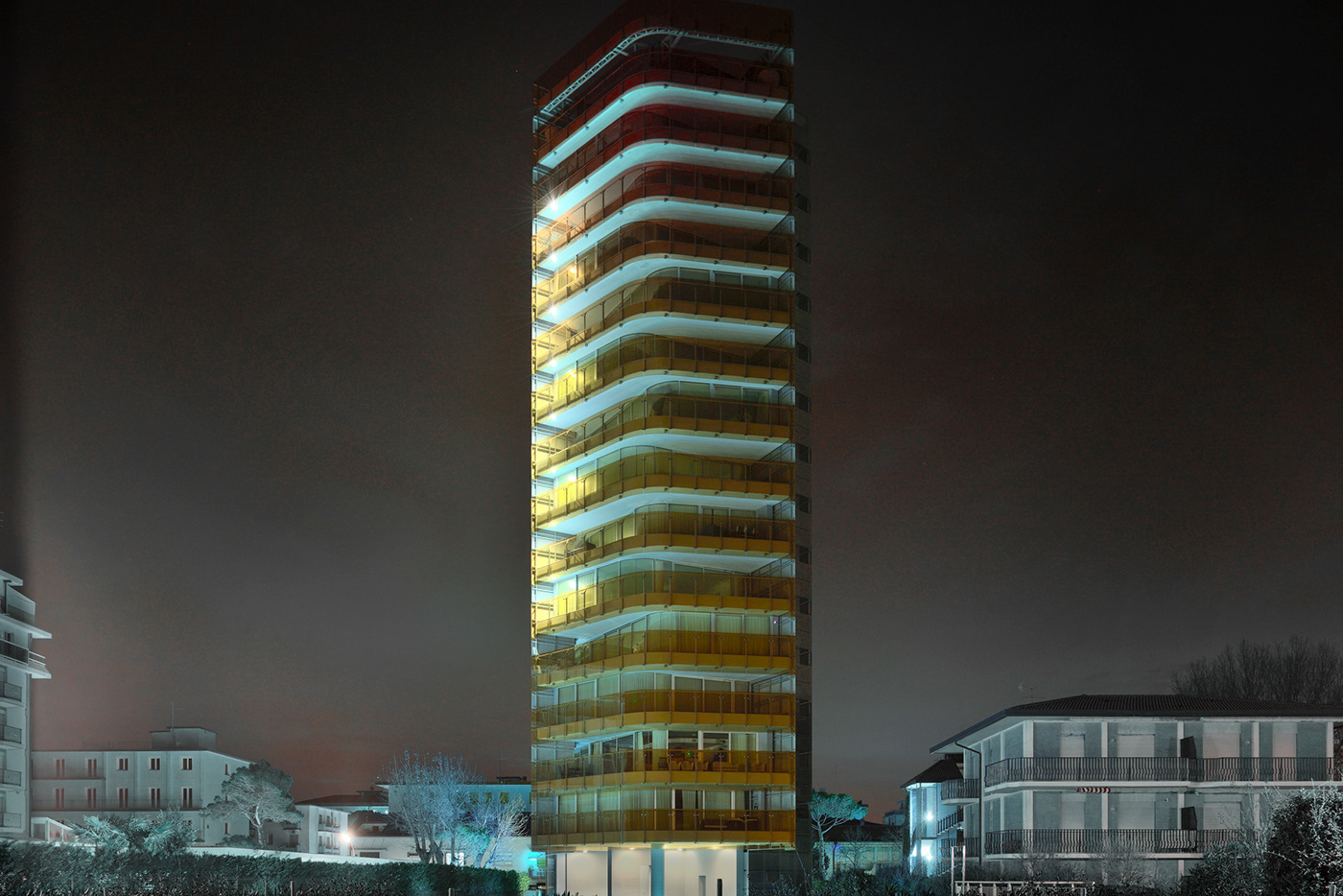
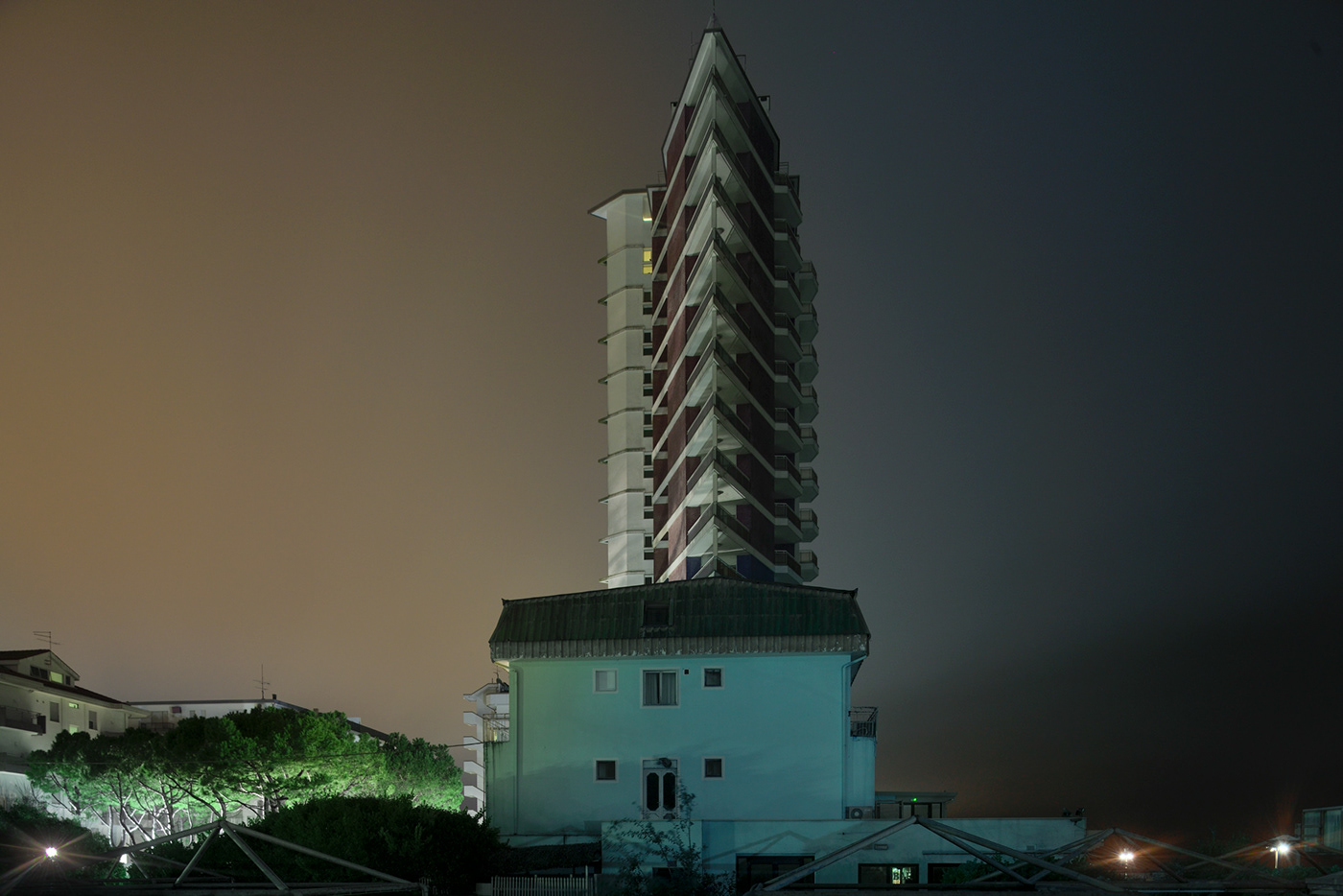
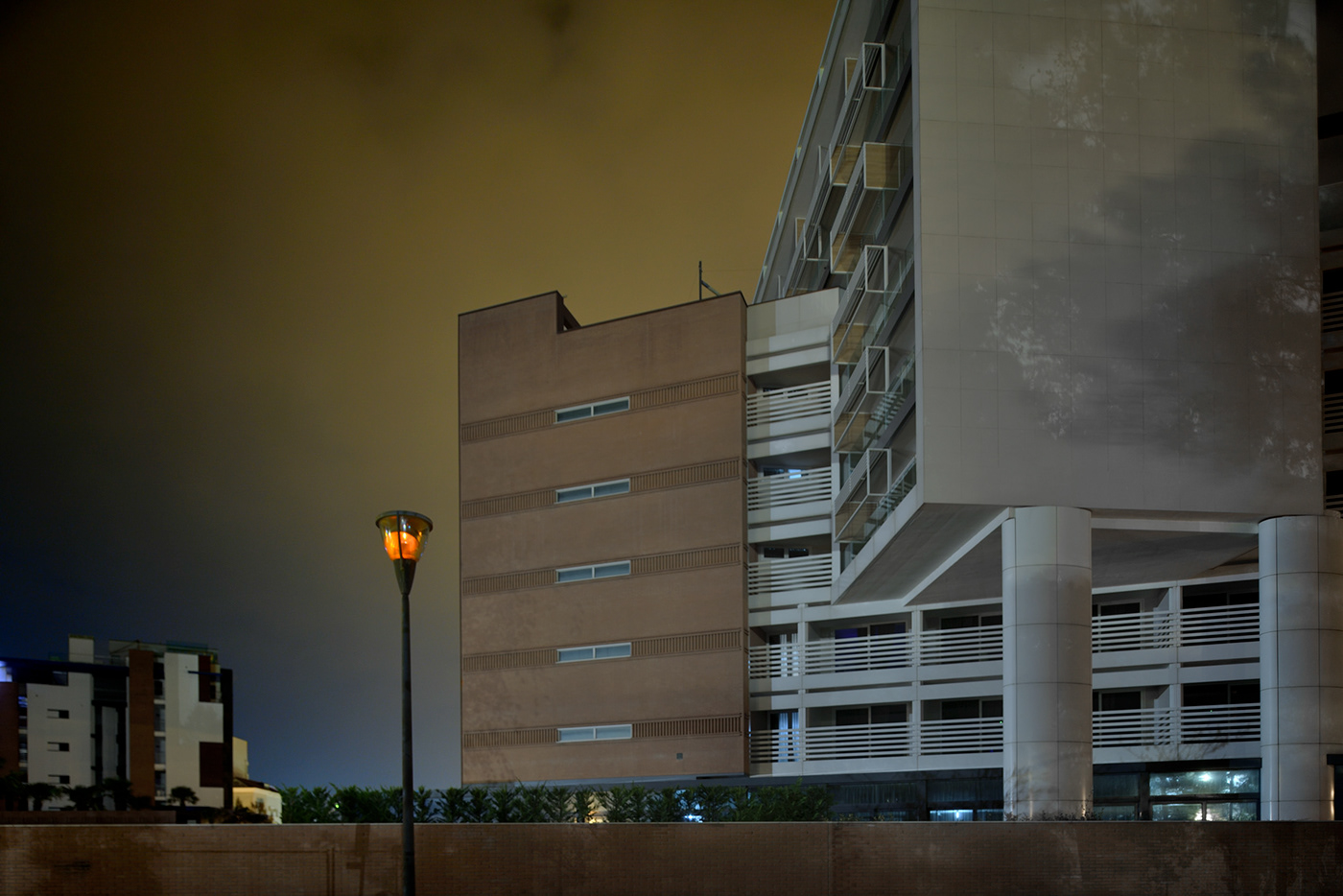
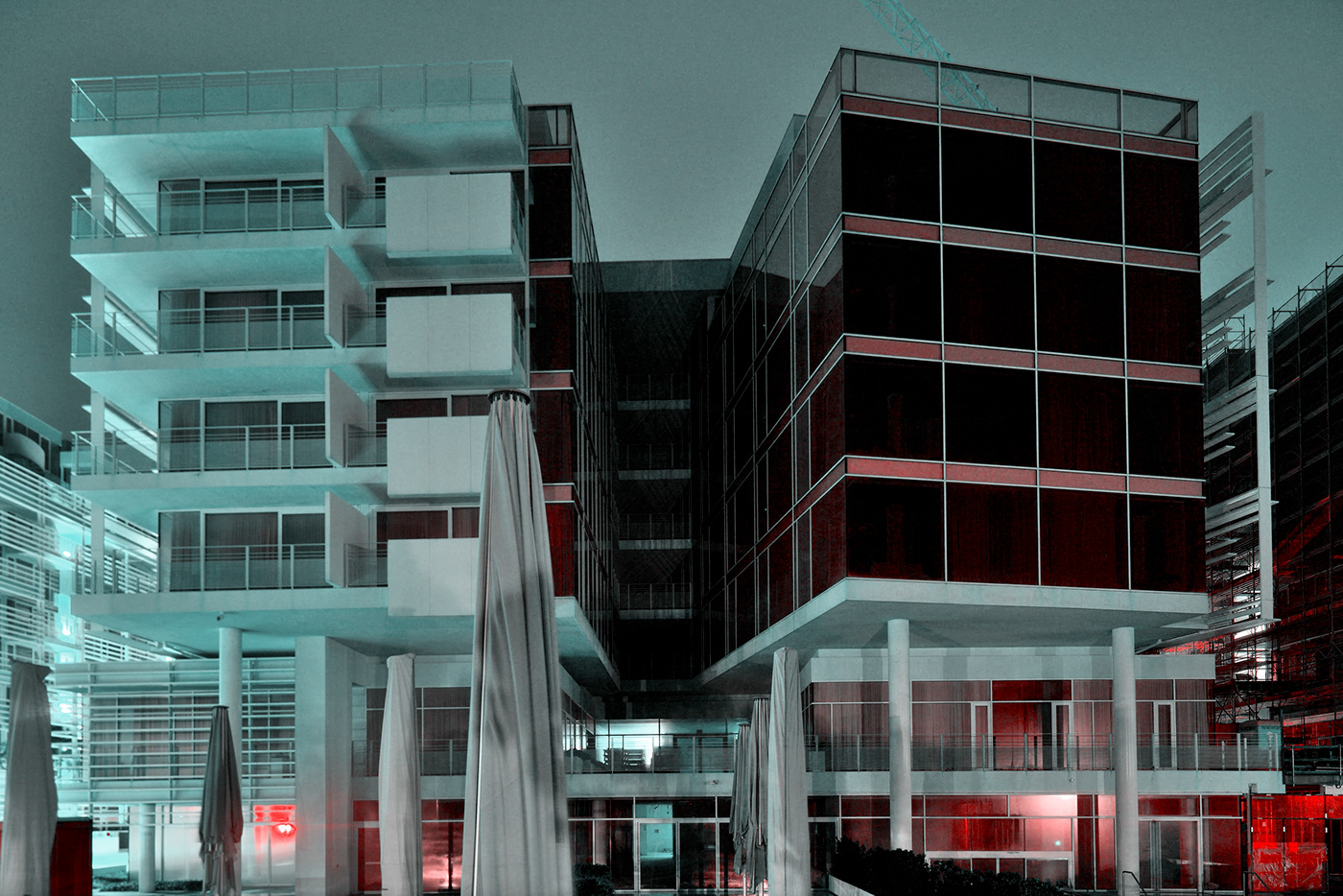
All the photos were taken in Jesolo (Italy) in the months of November and December 2020
